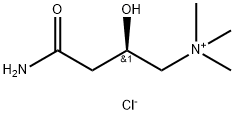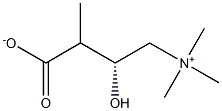3-Chloro-2-hydroxypropyltrimethyl ammonium chloride
- CAS NO.:3327-22-8
- Empirical Formula: C6H15Cl2NO
- Molecular Weight: 188.1
- MDL number: MFCD00055655
- EINECS: 222-048-3
- SAFETY DATA SHEET (SDS)
- Update Date: 2024-12-18 14:08:57

What is 3-Chloro-2-hydroxypropyltrimethyl ammonium chloride?
The Uses of 3-Chloro-2-hydroxypropyltrimethyl ammonium chloride
3-Chloro-2-hydroxypropyltrimethyl ammonium chloride is used in the preparation of multifunctional cationized cotton fabric based on TiO2 nanomaterials.
The Uses of 3-Chloro-2-hydroxypropyltrimethyl ammonium chloride
(3-Chloro-2-hydroxypropyl)trimethylammonium chloride solution (CHTAC) can be used:
- As a cation-generating agent for cellulose cationization by exhaustion method.
- To resolve 2,2′-dihydroxy-1,1′-binaphthyl enantiomers.
- To synthesize cationic glycogen (Cat Gly).
- As a quaternizing agent for quaternization of N-aryl chitosan derivatives.
Flammability and Explosibility
Non flammable
Properties of 3-Chloro-2-hydroxypropyltrimethyl ammonium chloride
| Melting point: | 191-193°C |
| Density | 1.154 g/mL at 25 °C |
| vapor pressure | 0.001Pa at 20℃ |
| refractive index | n |
| Flash point: | >230 °F |
| storage temp. | Sealed in dry,Room Temperature |
| solubility | Methanol (Slightly), Water (Sparingly) |
| form | clear liquid |
| color | Colorless to Light yellow |
| PH | 4.8 to 6.4(50g/L, 25℃) |
| Water Solubility | 835.2g/L at 20℃ |
| BRN | 6576172 |
| InChI | InChI=1S/C6H15ClNO.ClH/c1-8(2,3)5-6(9)4-7;/h6,9H,4-5H2,1-3H3;1H/q+1;/p-1 |
| CAS DataBase Reference | 3327-22-8(CAS DataBase Reference) |
| EPA Substance Registry System | 3-Chloro-2-hydroxypropyltrimethyl ammonium chloride (3327-22-8) |
Safety information for 3-Chloro-2-hydroxypropyltrimethyl ammonium chloride
| Signal word | Warning |
| Pictogram(s) |
 Health Hazard GHS08 |
| GHS Hazard Statements |
H351:Carcinogenicity H412:Hazardous to the aquatic environment, long-term hazard |
| Precautionary Statement Codes |
P202:Do not handle until all safety precautions have been read and understood. P273:Avoid release to the environment. P280:Wear protective gloves/protective clothing/eye protection/face protection. P308+P313:IF exposed or concerned: Get medical advice/attention. P405:Store locked up. P501:Dispose of contents/container to..… |
Computed Descriptors for 3-Chloro-2-hydroxypropyltrimethyl ammonium chloride
| InChIKey | CSPHGSFZFWKVDL-UHFFFAOYSA-M |
| SMILES | [N+](C)(CC(O)CCl)(C)C.[Cl-] |
New Products
Tert-butyl bis(2-chloroethyl)carbamate (S)-3-Aminobutanenitrile hydrochloride N-Boc-D-alaninol N-BOC-D/L-ALANINOL N-octanoyl benzotriazole 4-Hydrazinobenzoic acid 3,4-Dibenzyloxybenzaldehyde Electrolytic Iron Powder 1,1’-CARBONYLDIIMIDAZOLE R-2-BENZYLOXY PROPIONIC ACID 4-HYDROXY BENZYL ALCOHOL 1,1’-CARBONYLDI (1,2-4 TRIAZOLE) S-2-CHLORO PROPIONIC ACID (2-Hydroxyphenyl)acetonitrile 4-Bromopyrazole 5-BROMO-2CYANO PYRIDINE 5,6-Dimethoxyindanone 5-broMo-2-chloro-N-cyclopentylpyriMidin-4-aMine 3-(Hydroxymethyl)benzoate N-Boc-2-chloroethylamine 1-Bromo-2-methoxy-3-nitrobenzene N-Methyl-3-cyclopenten-1-amine 2-Bromo-3-hydroxybenzaldehyde 1H-indazole-5-carboxamideRelated products of tetrahydrofuran








You may like
-
 3327-22-8 3 Chloro 2 Hydroxy Propyl Trimethylammonium Chloride 99%View Details
3327-22-8 3 Chloro 2 Hydroxy Propyl Trimethylammonium Chloride 99%View Details
3327-22-8 -
 (3-Chloro-2-hydroxypropyl)trimethylammonium Chloride (ca. 65% in Water) CAS 3327-22-8View Details
(3-Chloro-2-hydroxypropyl)trimethylammonium Chloride (ca. 65% in Water) CAS 3327-22-8View Details
3327-22-8 -
 7441-43-2 98%View Details
7441-43-2 98%View Details
7441-43-2 -
 1260741-78-3 6-Bromo-3-iodo-1-methyl-1H-indazole 98%View Details
1260741-78-3 6-Bromo-3-iodo-1-methyl-1H-indazole 98%View Details
1260741-78-3 -
 4-bromo-3,5-dimethylbenzenesulfonyl chloride 1581266-79-6 98%View Details
4-bromo-3,5-dimethylbenzenesulfonyl chloride 1581266-79-6 98%View Details
1581266-79-6 -
 2490430-37-8 98%View Details
2490430-37-8 98%View Details
2490430-37-8 -
 N-(5-Amino-2-methylphenyl)acetamide 5434-30-0 98%View Details
N-(5-Amino-2-methylphenyl)acetamide 5434-30-0 98%View Details
5434-30-0 -
 124371-59-1 98%View Details
124371-59-1 98%View Details
124371-59-1
Statement: All products displayed on this website are only used for non medical purposes such as industrial applications or scientific research, and cannot be used for clinical diagnosis or treatment of humans or animals. They are not medicinal or edible.